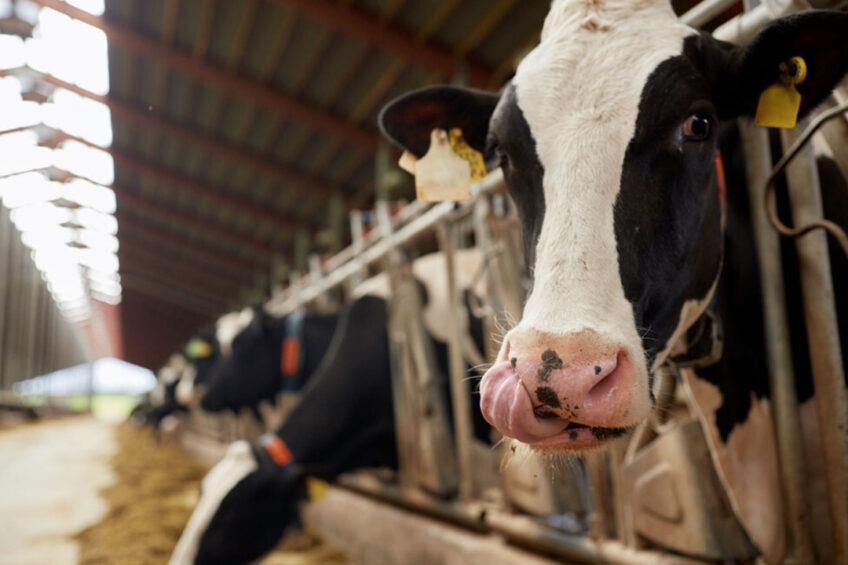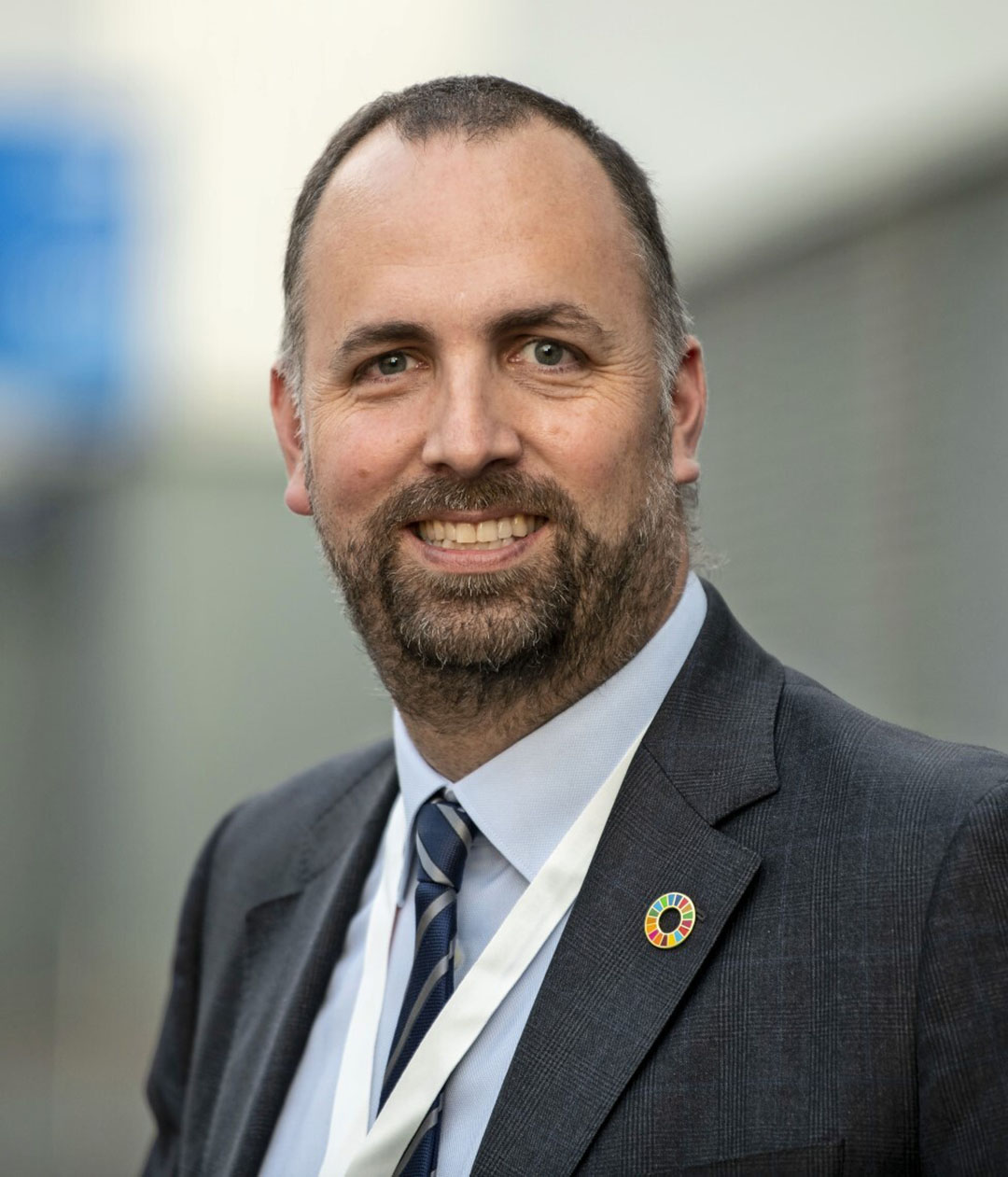Interview: “Bovaer is a game changer for dairy farming”

DSM is a major player in vitamins and minerals, a market that is growing steadily. The company is growing faster in other additives, such as the launched methane-inhibitor, Bovaer. DSM expects to grow even more in biomarkers that signal diseases before they break out and in the targeted approach to specific pathogens through food.
“Dairy farming is completely different from 5 years ago,” says Julien Martin, senior marketing director ruminants at DSM Animal Nutrition & Health. “In terms of yields, things are going well. Milk is now available in supermarkets for a higher price than Coca-Cola. The sector is, however, under a magnifying glass. Just look at what is happening in New Zealand, where dairy farmers get a levy on their CO2 footprint.”

How do you view global dairy farming right now?
“There is no doubt that consumers will continue to demand milk, butter and cheese. Milk fat and protein are cheap foods that are used worldwide. Demand from China is increasing, consumption in Western countries remains at a good level and there are no real threats.
“Over the next 5 years, the extra supply will have to come from more production per animal. If you only want to let your cows graze, an annual production of 8,000 kg is enough. For those who do not achieve 10,000 kg per cow per year with intensive supplementary feeding, the question is whether they can continue to be dairy farmers.
“Lifespan is at least as important. If you dispose of the cows after 2.5 lactations, you are burning money. If you can milk them for 7 years, you will earn a lot of money. That is why we must focus on a longer lifespan, in addition to more litres.”
What do farmers have to do to get there?
“Most farmers want to control all processes on their farm. You can if you have 30 cows; you cannot if you have 250. That is why livestock farmers must have confidence in external partners, such as nutritionists. A bit like the American model. They must place responsibilities with third parties, including maybe the financial ones. This can be done through cooperatives, partnerships or buyers.”
In the long term, does that mean a more integrated model of dairy farming – a poultry and pig model?
“Good question! A few years ago, I would have said: ‘That will never happen’. But I see different movements now. In France, dairy companies have an obvious shortage of milk. They are therefore now investing directly in dairy farms. They do not take over the entire companies – that requires too much capital. But they do want to invest in, for example, milking robots so that the farmer can more easily attract employees. And the only reason for that is that dairy companies want to secure their supply, just as they do in the poultry and pig integrations.”
Do you expect this to work for all of Northwest Europe?
“No, because dairy farmers there have a completely different view and have much more equity in the form of land. They can often afford the investments themselves. I see much more in feed centres there: joint production, storage and feeding of roughage. This will take off in the next generation, purely because specialist knowledge for forage cultivation is required and its extraction takes a lot of time. That is much less profitable than taking care of and milking the cows.
“The young generation calculates more than their parents. They see that growing and harvesting 3,000 hectares of maize and grass gives more yield. Feeding with 1 feed mixer is also much more economical than 10 feed mixers that run for less than an hour a day.
“I expect that dairy companies in Northwest Europe will focus on this and facilitate it, also because of the short distance between the small companies. If those companies do not cooperate and adjust their methods, they will accept that they will disappear from the scene. Dairy processors (or processing companies, like FrieslandCampina, Arla and such) will bring this message to their suppliers (farmers) and will financially support such a transition.
“Farmers have an interest in such guidance, in clarity. Look at Ireland – there, the government and dairy companies say clearly which direction they want to go in, and they are working on it. In other countries, the policy changes every 5 years. You cannot base management on that; indicate a direction! New Zealand is introducing a greenhouse gas tax. As a farmer you may not like that, but the New Zealand government and Fonterra are committed to safeguarding the future.”
It’s an excellent opportunity for you, being a methane inhibitor supplier.
“Certainly, but the New Zealanders are also testing other solutions. We do expect Bovaer to become a key contributor. We are not going for a niche market. The entire sector must reduce CO2. If 2% of livestock farmers do something, it does not count. Not all dairy farmers will use Bovaer. The emission also depends on other factors. But with a 30-50% reduction in methane emissions, Bovaer can be a valuable tool for many.”
What are the costs?
“Roughly 1 cent per litre of milk; € 80-90 per cow per year.”
You say 1 cent per litre for now. Is that going to change?
“Yes. Third parties currently still produce Bovaer for us. We can hardly keep up with the rapidly increasing demand. We are building a plant in Scotland specially equipped for Bovaer production. It will be fully operational in 2025. We then foresee the price being between € 50 and € 55 per cow per year.”
How many cows will be on Bovaer in 5 years?
“I am not allowed to comment on that, as we are a listed company. Globally, there are approximately 65 million high-yielding cows, most of which are supplemented with high-energy products. That is the potential target group. Given our investments, it will be clear that we are not aiming for 1 or 2 million cows.”
If you get 10-15% of that number of cows on Bovaer, that means a turnover of about € 400 million per year, while the whole of DSM Animal Nutrition & Health now does € 3.5 billion!
[Laughing]: “Again, I am not allowed to comment on that. But Bovaer is a game changer, both for dairy farming and DSM.”
Is DSM moving further away from vitamins and minerals?
“No, we certainly are not. They are accepted and valued feed additives. They are and will remain important to us. That market will grow in volume with the worldwide livestock, say 1.5-2% per year. Turnover in euros will grow faster. We are shifting from a product-driven to a customer-driven company. What do customers want in terms of nutrition and animal health, and what problems do they want to solve? We invest heavily in gut health, in the microbiome. We have already made many introductions to poultry, and we are working on pigs. There is much more to come in cattle, partly based on yeasts and herbs.”
One of your researchers mentioned during the DSM Global Ruminant Days: ‘We found interesting results on how the use of herbs affects nitrogen emissions’. Are you also going to solve the nitrogen emission problem?
“There is not a single topic that we have not researched. Nitrogen is a major issue in cattle and other ruminants. So yes, we are also working on that.”
What else are you researching?
“Our Animal Health & Nutrition division focuses on improving the efficacy of nutrients, improving animal health and reducing emissions. We are modulating the microbiome, that is, adjusting the intestinal flora, via ‘smart sugars’. That is the way to go. We aim to target for precision. For example, for tackling a specific Escherichia coli or a specific coccidiosis. That is what our research focuses on.
“We look for products that are much better than the existing ones. Innovation is not about 5% better. A few percent improvement is not enough; we will not win any markets with that. We only want to introduce something if we can really be effective.”
Will there be more substantial changes?
“The most significant changes are in our Precision Services –digital techniques that change the way we farm, biomarkers that predict diseases before they break out, based on non-invasive techniques: blood, milk and saliva. Working with milk or saliva is easy and not an issue for society.”
Will you remain B2B, or will you focus more on the farmer?
“Cooperatives and integrations bring knowledge to the farmer more easily than we ever could. Our interest is to know exactly what the end user needs. If we know that, we can deliver it, but we do not have to do it directly. We must first offer the farmers a return, which is and will remain the basis. Then, and in doing so, spare the environment and help protect our industries. The links in the chain must communicate better.






